Estimated reading time: 4 minutes
Have you ever spotted this type of damage on your fruit? Wondered whether it could be caused by grasshoppers?
It’s more likely that you’ve never really thought of this particular insect as a fruit-eating pest. After all, they’re better known for eating grass, leaves, and stems.
We’re here to tell you that this damage is typical of grasshoppers, or it might even be caused by locusts.
Related Articles
Why you should pick up fruit from the ground
Picking up your fruit from the ground is the first principle of organic orchard hygiene, and one of your best lines of defence against pests.
Netting fruit trees made simple for backyard growers
The sooner you net your fruit trees, the sooner you’ll get reliable crops. We explain the different systems to help you choose the right one.
The downside of drape netting fruit trees
Netting your fruit trees is a great idea, but can have unintended consequences if you don’t remove them in a timely fashion.
Identifying grasshopper damage
First up, when should you be monitoring for potential grasshopper damage on your fruit?
This differs in different climates, and seasonal conditions can also have a dramatic difference on if (or when) they show up.
They can become quite a problem from about mid-summer onwards, but if you’re on the lookout you’ll probably notice when they show up in your garden.
That’s the time to start checking your fruit for potential damage.
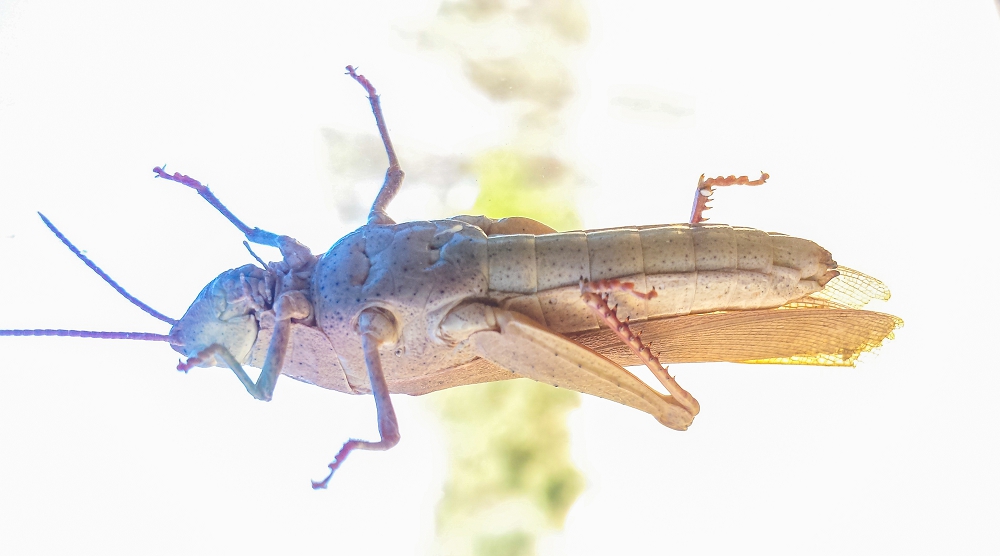
However, that’s not the only damage to watch for. Grasshoppers can damage fruit, but if they turn up in large enough numbers, they can also devastate whole trees.
Here’s a little plum tree in our orchard that was badly attacked.
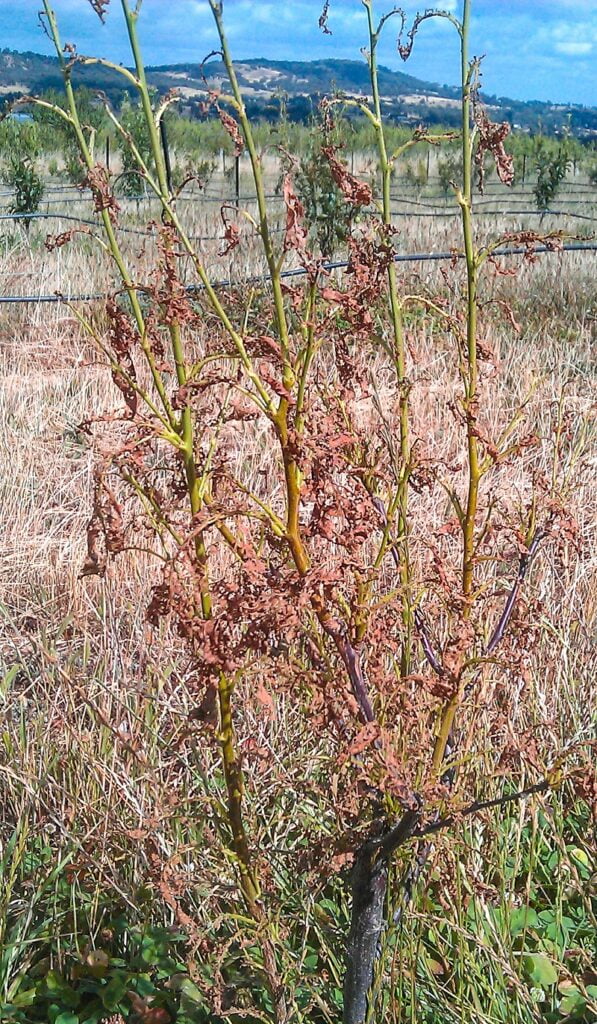
As bad as it looks, a tree can survive this sort of damage, as long as it happens late enough in the growing season.
That’s because the tree has already done most of its growth for the year. Once your fruit trees stop growing for the season, they can survive more easily without any leaf cover.
The photo below is what this little plum tree looked like the following spring. Since then, it’s continued to grow and become very productive.
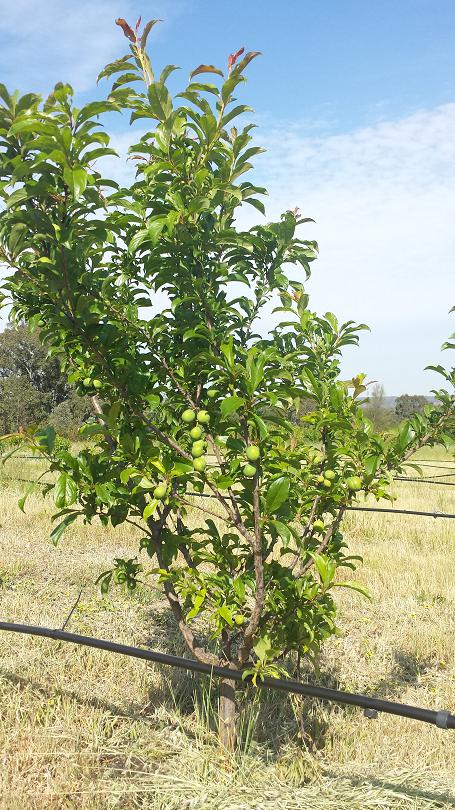
However, severe damage can kill really young trees. Damage early in the season can also be a death knell if the trees are completely stripped of their leaves.
Can you prevent grasshopper damage?
One way to combat them seems to be to keep the grass cut (or eaten down by animals) under the trees. This removes some of the habitat and protection from predators that they rely on.
But honestly? It can have limited success.
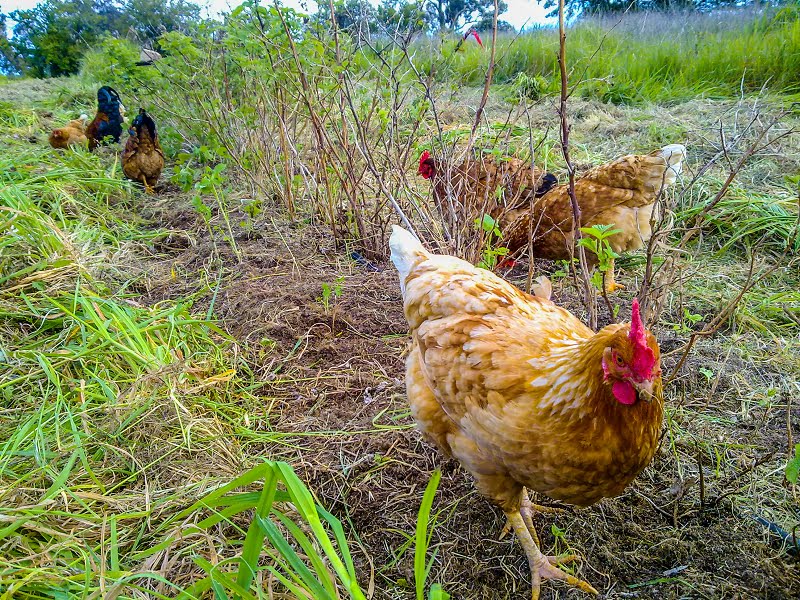
The two methods that really work
The first (and probably best) method is to use some animal friends to do what they do best.
Chickens and other poultry just LOVE to eat grasshoppers. But there are a couple of keys to making this technique actually work:
- You need to have enough birds to cope with the scale of the problem. There are only so many grasshoppers a chicken can eat, so don’t have unrealistic ideas of how well, or how quickly, they’ll solve your grasshopper problem;
- If chickens are allowed to free-range over a wide area, the grasshoppers may not come to their attention. Try to confine the chickens around the affected fruit trees for a brief time;
- Consider limiting access to their other food while they’re on grasshopper duty. Obviously, this needs to be short-term and well-managed. Don’t run the risk of starving your chickens! (Find some simple guidelines about what to feed your chickens here). But they’re more likely to be keenly hunting if their bellies aren’t already full when they start their shift.
Done properly, poultry can help to clear up a grasshopper problem very quickly. This is a great example of the many fabulous ways that animals can be key partners in your garden.
And the last grasshopper control method…
The last method is netting.
Regular bird netting won’t work, because the holes are generally too big.
In Victoria, it was mandated in late 2021 that all fruit tree netting must have holes smaller than 5mm in diameter. This will probably be small enough to exclude most grasshoppers.
And if you’re already netting for fruit fly, which has smaller holes again, then you’ll never be bothered by grasshoppers eating your fruit, or your fruit trees.
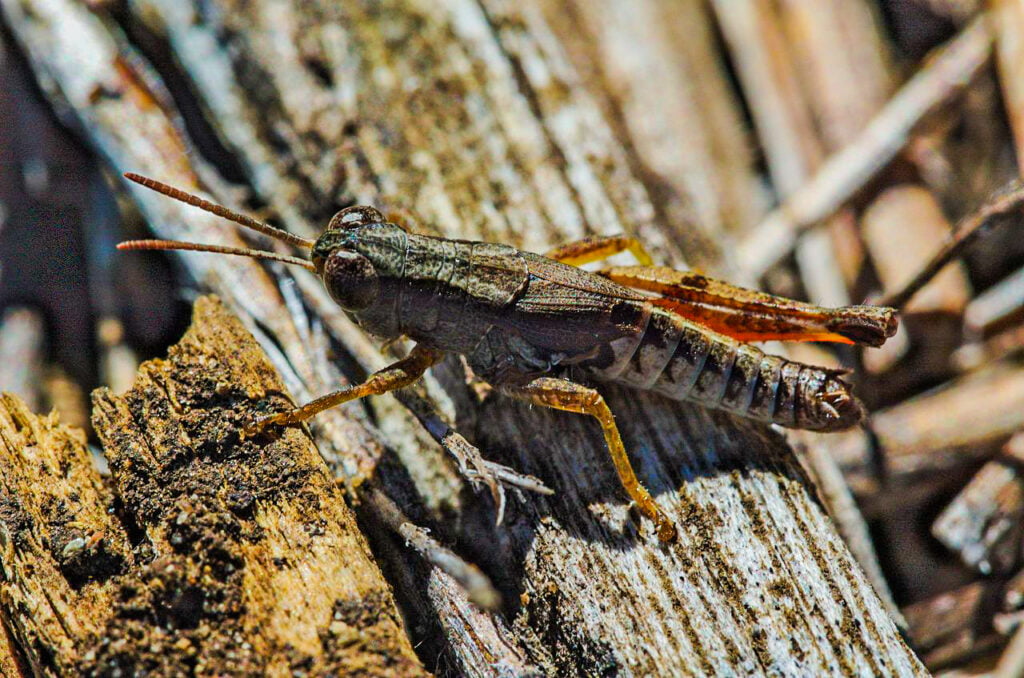
Related Articles
Why you should pick up fruit from the ground
Picking up your fruit from the ground is the first principle of organic orchard hygiene, and one of your best lines of defence against pests.
Netting fruit trees made simple for backyard growers
The sooner you net your fruit trees, the sooner you’ll get reliable crops. We explain the different systems to help you choose the right one.
The downside of drape netting fruit trees
Netting your fruit trees is a great idea, but can have unintended consequences if you don’t remove them in a timely fashion.

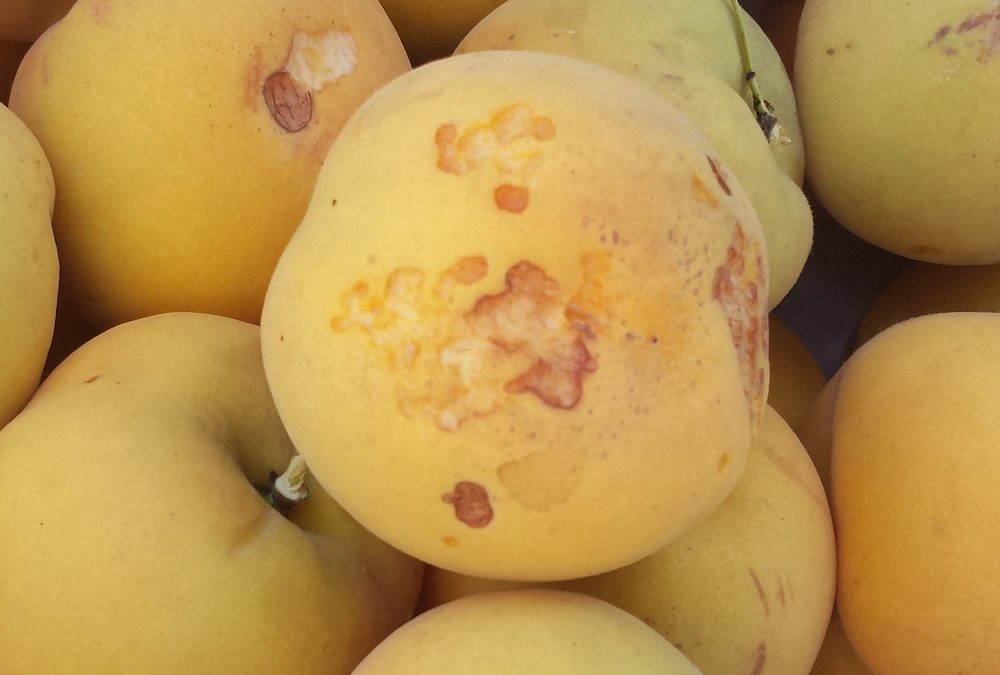
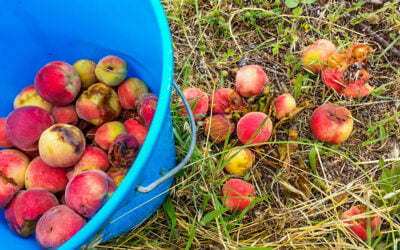

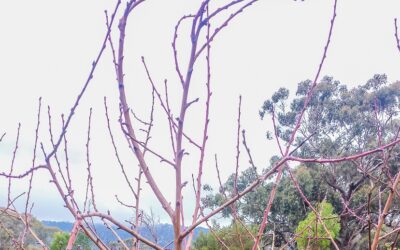


Have you experienced grasshoppers stripping bark and eating through smaller branches. Something has stripped my your apricot of leaves and broken 2 small 1/8-1/4” thick branch at the bottom. All fruit trees are being stripped from bottom up, but not being ring barked except for golden delicious apple tree. Yes tiny established branches have been gnawed through. Thank you kindly
Hi Vicki – grasshoppers, when hungry, can go for any soft plant tissue including stems & girdling bark – so it definitely could be the culprit. My question would be – have you observed grasshoppers on the tree? If you’re not sure if it is grasshoppers, and trying to diagnose the pest from the damage, we’d recommend spending some time looking really closely at your trees at different times of the day to see what’s visiting. Good luck, Meg – GGF team.
I too am watching Grasshoppers eat the bark off my Fuji apple tree, since they have eaten all the leaves. I have tall grasses- that are green and not too far from the tree, so the little buggers should not be hungry. Any ideas other than netting? Thank you!
One additional method that isn’t mentioned in the blog is attracting predatory insects such as paper wasps or parasitic wasps. They like plants like clover, cosmos, buckwheat, alyssum as these are sources of pollen & nectar for them. On a backyard scale, this can be really effective. Another thing to encourage would be reptiles – you can do this by adding habitat rocks or logs to your landscaping! Both slow, ecological solutions so might not deal with the problem as quickly as netting will! Meg – GGF team.